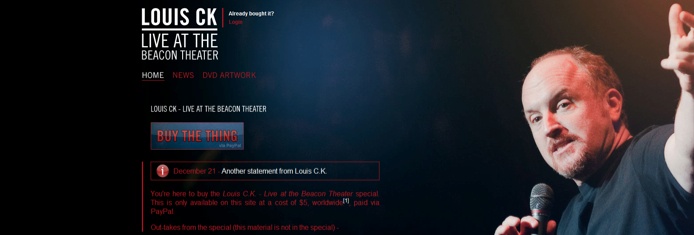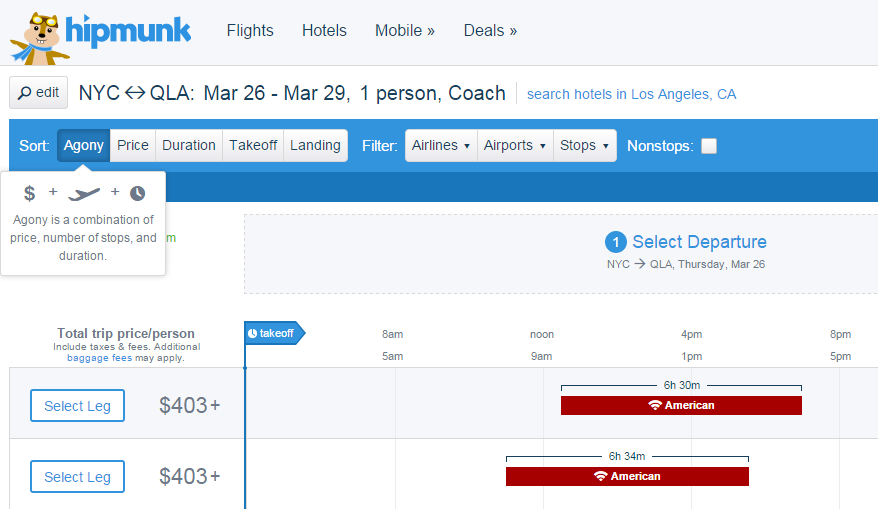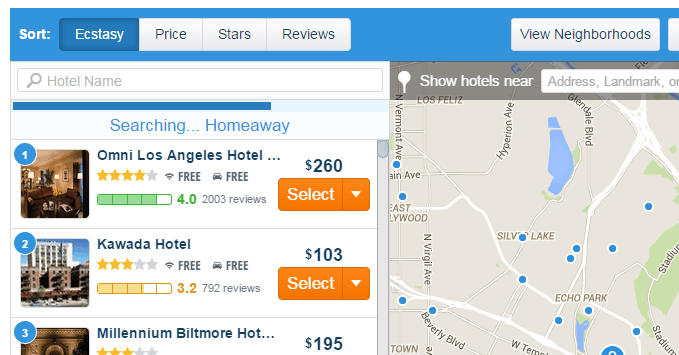-
 5 min. read
5 min. read
-
 Trevin Shirey
Trevin Shirey VP of Marketing
VP of Marketing
- Trevin serves as the VP of Marketing at WebFX. He has worked on over 450 marketing campaigns and has been building websites for over 25 years. His work has been featured by Search Engine Land, USA Today, Fast Company and Inc.
Have you ever wondered if there was a silver bullet solution to getting people to buy your products or convert into a lead? Are you wondering if there’s some sort of magical word or phrase that guaranteed visitors would click “buy now” or “contact us” and become loyal, long-term customers? If you’ve pondered such things, you’re not alone. In fact, many studies and experiments have been performed to discover which words convert more than others, and which copywriting tactics work best.
While many different words have been tested for conversion power, there remains a less-traversed and more experimental road where unconventional words and phrases are useful. As we begin exploring this area, we need to keep a few things in mind about our target audience:
- Demographics and psychographics: age, gender, likes, dislikes, dispositions, etc.
- Budget: the average amount a visitor is likely to spend
- Value perception: how the visitor values our products
- Openness: the likelihood of a visitor to be open to something new
These factors influence how we devise and modify words and phrases aimed at converting visitors. These aren’t “silver bullet” solutions — they are contextual and play on the respective audiences they target. But with knowledge of your audience, some psychology, and willingness to test different copywriting methods, you can find unconventional solutions that will drive more conversions.
Here are four unusual copywriting ideas that just might work for you.
1. Relevant humor
One of my personal favorite phrases I’ve seen as a replacement for the typical “Buy Now” or “Add to Cart” buttons comes from the website of famous comedian Louis C.K.:  “Buy the thing.” It puts a smile on your face. This call to action also fits with his often blunt personality. You can almost imagine him saying the words.
“Buy the thing.” It puts a smile on your face. This call to action also fits with his often blunt personality. You can almost imagine him saying the words.
The model explained
There are a million ways to envision a “buy now” button, but the majority of websites have narrowed it down to just “buy now” “add to cart” and “purchase.” While these are what most digital shoppers have become accustomed to. Consider creating a variation that is relevant, but still makes your visitors laugh.
2. Connect with your customers
Along a similar vein of using relevant humor, the travel site hipmunk uses this strategy in their filtering options. When you search for flights, your options are sorted by agony:  And if we search for hotels our options are sorted by ecstasy:
And if we search for hotels our options are sorted by ecstasy:  These sorting options not only give us that same smirk, but they demonstrate a unique approach to the travel experience. We often associate things like agony and frustration when planning flights and hope for things like relaxation and ecstasy when picking out a hotel.
These sorting options not only give us that same smirk, but they demonstrate a unique approach to the travel experience. We often associate things like agony and frustration when planning flights and hope for things like relaxation and ecstasy when picking out a hotel.
The model explained
You know your business, customers, and industry better than anyone. How would you describe the buying process or the customer’s journey? Is it frustrating?
Does the service or products give customers a certain expectation? Try using different product and/or pricing filters aside from the typical price, size, or color to connect with them. Use words and phrases that show you understand what they are really looking for.
3. Make something incredible seem attainable
Another variation of this strategy comes from GymIt, a fitness center that uses light humor to encourage signups:  This is a basic altercasting tactic where the reader has the identity of a superhero projected onto themselves. We don’t want to be a couch potato. We want to be a superhero.
This is a basic altercasting tactic where the reader has the identity of a superhero projected onto themselves. We don’t want to be a couch potato. We want to be a superhero.
The model explained
Think of the ideal persona/identity – even an exaggerated one – that someone would receive from using your products or services. Position that as something attainable. Accompany this idea with relevant urgency or action-based discounts, such as “10% for anyone who can answer this question.” This will make your readers much more likely to act.
4. Describe benefits creatively
When it comes to product descriptions, we usually see a specs page or paragraph with a brief product overview.
Rarely do these pieces of copy improve the chance a visitor will convert, as potential customers use product descriptions to simply confirm product details. Betabrand had a different idea:  Betabrand invented the term “crotch heat index (CHI)” to add some humor to their product description. While the description actually does highlight the mesh quality, the benefit is an imaginary idea that makes potential customers crack a smile.
Betabrand invented the term “crotch heat index (CHI)” to add some humor to their product description. While the description actually does highlight the mesh quality, the benefit is an imaginary idea that makes potential customers crack a smile.
The imaginary term makes them feel entertained, even though they’re reading a product description.
The model explained
An imaginary term, phrase, or concept can make your product or service stand out and seem that much more unique. Can you come up with a new way to explain how you address the pain points of your customers? Of course, you don’t have to create imaginary benefits or terms to spruce up product descriptions.
Consider highlighting features or visualizing benefits in a way that entertains readers, not simply informs them.
Your copy should be strategic — and creative
The models we’ve covered are for aimed at marketers and businesses looking to deviate from the norm. You can use each model by modifying it to match your respective audiences, playing on their interests and the benefits you offer. You can still be strategic with an unconventional approach.
Your calls to action, product copywriting, or articles may have a few different purposes, but that doesn’t mean they have to be boring. Try out one of these four models and see how your customers or leads respond. Have you noticed any strange or avant-garde copywriting tactics?
Please share them with us in the comments below!
-
 Trevin serves as the VP of Marketing at WebFX. He has worked on over 450 marketing campaigns and has been building websites for over 25 years. His work has been featured by Search Engine Land, USA Today, Fast Company and Inc.
Trevin serves as the VP of Marketing at WebFX. He has worked on over 450 marketing campaigns and has been building websites for over 25 years. His work has been featured by Search Engine Land, USA Today, Fast Company and Inc. -

WebFX is a full-service marketing agency with 1,100+ client reviews and a 4.9-star rating on Clutch! Find out how our expert team and revenue-accelerating tech can drive results for you! Learn more
Try our free Marketing Calculator
Craft a tailored online marketing strategy! Utilize our free Internet marketing calculator for a custom plan based on your location, reach, timeframe, and budget.
Plan Your Marketing Budget

Maximize Your Marketing ROI
Claim your free eBook packed with proven strategies to boost your marketing efforts.
Get the GuideTry our free Marketing Calculator
Craft a tailored online marketing strategy! Utilize our free Internet marketing calculator for a custom plan based on your location, reach, timeframe, and budget.
Plan Your Marketing Budget





